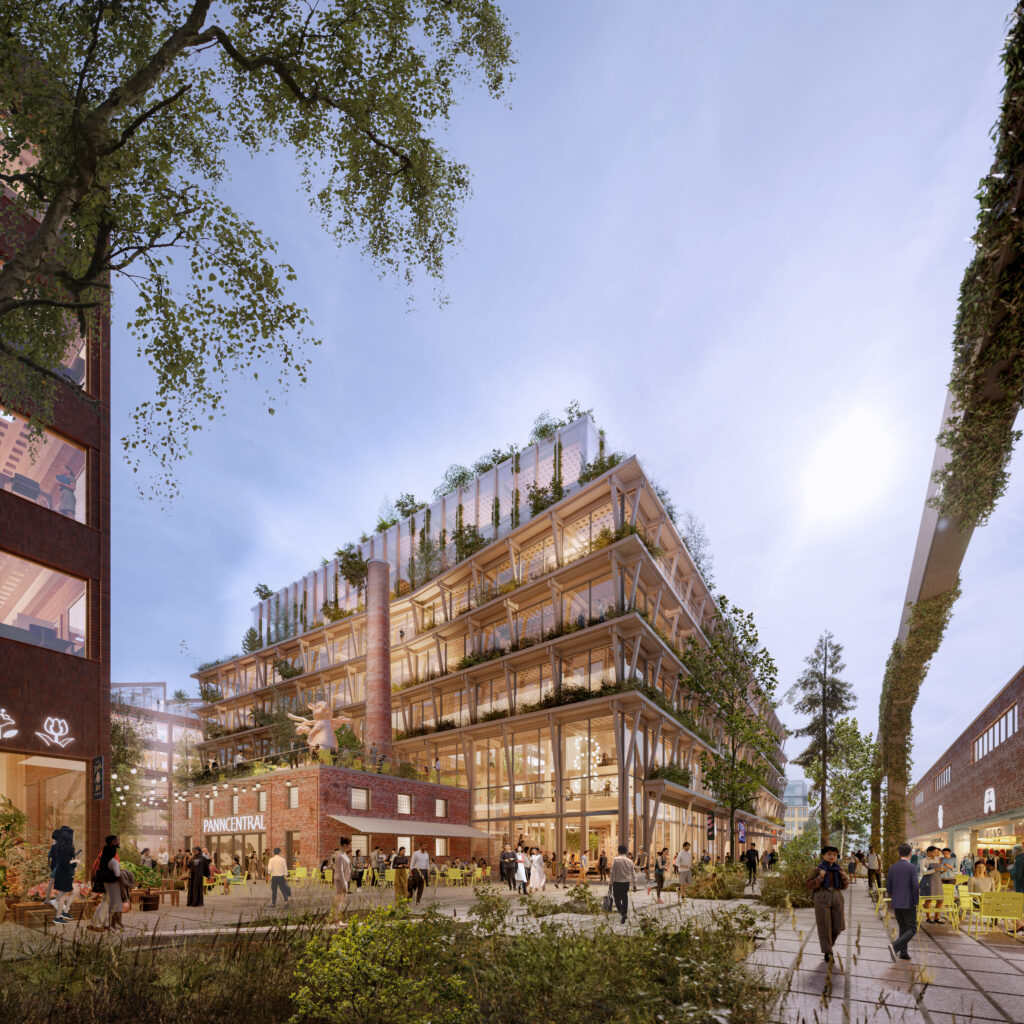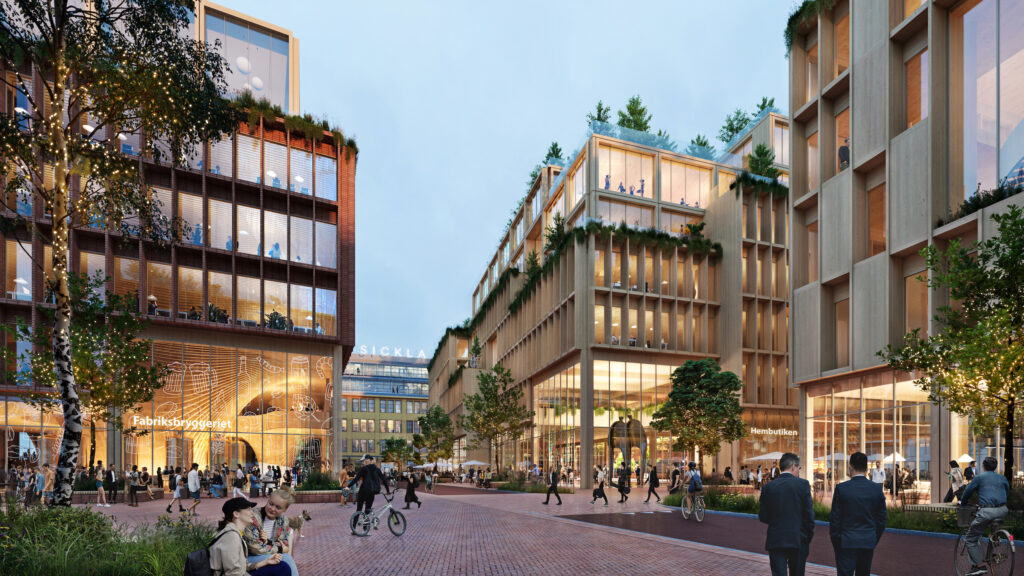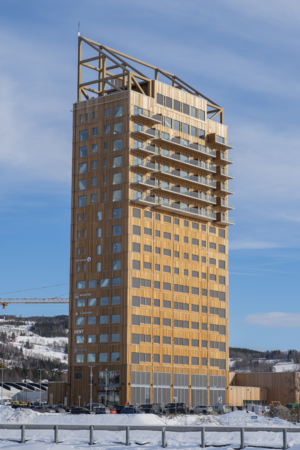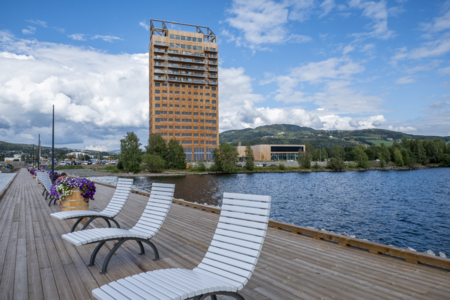The aim is to accelerate the development of sustainable architecture
A new district made entirely of wood to improve the city’s air quality and the lives of its inhabitants, but also to accelerate the green transition of the real estate industry. Stockholm Wood City, the project for the world’s largest urban timber building, which will be launched in 2025 and completed in 2027 to redesign the face of the Swedish capital, was created to meet these needs. That is a breakthrough for sustainable architecture, and urban development is indicated by a number of details, such as the 250,000 square metre plan, on which 7,000 offices and 2,000 homes will be built, as well as restaurants and shops.
Wood City will be built in Sickla, in the southern part of Stockholm, in place of a former industrial area full of factories and car parks. A non-causal choice, as Annica Ånäs, CEO of Atrium Ljungberg, the architectural firm that will be in charge of the project, explains: “Stockholm is unbalanced: about half of the citizens live south of the centre, but most of the work spaces are located north of the centre”.



The 15-minute city
This is why the city’s largest wooden settlement will be built there, with numerous more homes than offices. And where, in the future, a new metro line will be inaugurated to facilitate travel as a step towards the idea of the 15-minute city, where one can walk, cycle or take public transport to any part of the city centre, arriving at one’s destination in a short time. Wood City is a response to the increasing demand from people to live in innovative and sustainable housing, but also to a change in mentality as, with buildings responsible for around 40% of CO2 emissions globally, renewing the approach and culture of the real estate industry opens up new scenarios for sustainable architecture and urban development in line with the needs of the environment.
A project that will teach how to do better
In many parts of the world, thinking about building a neighbourhood relying on wood might seem bizarre or at least a solution seemingly more of marketing than a real urban vision. A problem that only exists in Sweden. “We want to show that it can already be done with solid wood, boards and beams made from layers of wood stacked together for strength, to avoid the huge carbon footprint of standard building materials such as concrete and steel,” said Ånäs.
He pointed out that although the number of buildings made of wood is growing rapidly at the moment, these are usually projects for individual buildings and not for a settlement of 25 blocks. This is also why Atrium Ljungberg has planned a phased construction, which will allow learning and implementation of timber construction techniques as the work progresses: “We will learn a lot with such a large-scale project,” is the conviction of the company’s CEO.
The increase in timber buildings in recent years has made it possible to conduct research to evaluate better the pros and cons of using this material. Thus it was discovered that in addition to the environment, people’s health and well-being also benefit from living in a house or working in wooden offices. Wood City is a project that obviously also looks at energy saving, a primary aspect in a country that has put energy supply and energy efficiency at the centre of the political and social agenda. The aim is, therefore, to self-produce energy, store it and share it with other facilities.



Scandinavia and Wood, a fruitful marriage
Such a project intrigues me, so it is eagerly awaited to find out what Stockholm’s most innovative district will look like in four years. It is certainly not surprising that the idea came from Scandinavia, a part of the world where people are used to finding practical solutions to meet their own needs and those of others, adapting to changes in society and the evolution of time. If it is true that houses here were once made of wood, a return to the past seems almost normal, knowing that Wood City is something new in terms of size but not in terms of concept.
Between Norway and Sweden, there are three skyscrapers made entirely of wood: the 50-metre-high Treet Building in Bergen (Norway), housing 62 flats spread over 14 floors, the Sara Kulturhus cultural centre in Skelleftea (northern Sweden), with a 76-metre high tower housing a hotel with rooms made of prefabricated modules, assembled one on top of the other. However, none is like Mjøstårnet, the world’s tallest timber skyscraper, 85.4 metres, located near Oslo and was built using only glulam.



